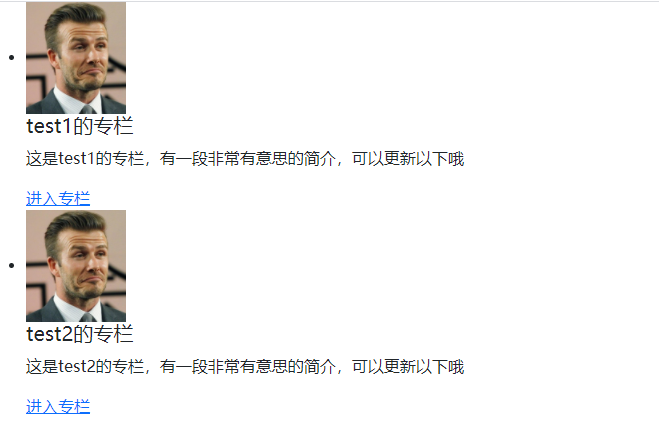1.子组件如何做:
这里以一个对象数组类型的参数为例
(1)子组件中定义要传过来的参数,该参数要有一个类型约定(interface),这里要导出是因为父组件要用到该接口:
export interface ColumnProps {
id: number;
title: string;
avatar: string;
description: string;
}
(2)子组件中的props属性如何定义该传过来的参数:
props:{ list: Array as PropType<ColumnPros[]>, required:true }
import { defineComponent, PropType } from 'vue'
说明:
- 这个props中不能直接使用Array as ColumnProps[],因为Array是一个数组的构造函数,不是一个类型,所以不能断言成一个类型
- vue中PropType的用法:
- 接受一个泛型,可以将一个array的构造函数返回传入的泛型类型
- 可以把一个构造函数断言成一个类型
2.父组件如何调用子组件:
(1)引入子组件及子组件定义的接口(interface)
import ColumnList, { ColumnProps } from './components/ColumnList.vue'
模拟传给子组件的数据:
const testData: ColumnProps[] = [ { id: 1, title: 'test1的专栏', description: '这是test1的专栏,有一段非常有意思的简介,可以更新以下哦', avatar: 'https://ss0.bdstatic.com/70cFuHSh_Q1YnxGkpoWK1HF6hhy/it/u=1827281934,1605450328&fm=15&gp=0.jpg' }, { id: 2, title: 'test2的专栏', description: '这是test2的专栏,有一段非常有意思的简介,可以更新以下哦', avatar: 'https://ss0.bdstatic.com/70cFuHSh_Q1YnxGkpoWK1HF6hhy/it/u=1827281934,1605450328&fm=15&gp=0.jpg' } ]
(2)setup中设置data:
components: { ColumnList }, setup () { return { list: testData } }
(3)页面中调用:
<column-list :list="list"></column-list>
3.效果:
即可在页面中出现:
